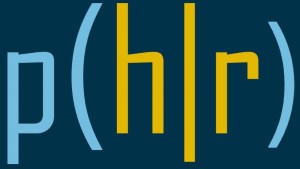International
Government seeks grand conversation on education reform | Universities New Zealand Executive Director Chris Whelan said for the country’s eight universities the most important issue continues to be that they are underfunded for the tuition they provide to students. New Zealand’s funding for universities lags behind the OECD average, and is on a par with countries such as Slovenia, Spain and Estonia.
How are universities creating the leaders they need? | Many are introducing trainee and talent management programmes as a systematic approach to developing new leaders and managers and creating a cadre of people who are committed to the organisation. Such trainee programmes traditionally consist of a range of placements across the institution together with mentoring and-or professional development. In turbulent times, we argue that such programmes organised internally may not always be sufficient to develop the current and new generation of global university leaders and managers, as they often lack an outside perspective.
We must drop the ‘arts’ vs ‘science’ narrative | As part of a major potential overhaul of school-leaver education, ministers have suggested the possibility of setting a lower tuition fee cap for university courses – including the creative arts – that are deemed to have lower median salary outcomes. Segregating subject areas in this way, however, and valuing certain areas of study as worth more than others, is archaic and would undermine the cross-sector collaboration that is fundamental to British education and the UK economy.
U.S. National
Can higher ed find the right model for accountability? | [E]xperts at an event hosted by Third Way, an education advocacy organization, explained that finding the right risk-sharing model will not be easy and requires discussion around students’ and institutions’ unique characteristics, among other factors, to be effective.
‘Accountability and Opportunity in Higher Education’ | A new collection of essays — Accountability and Opportunity in Higher Education: The Civil Rights Dimension (Harvard Education Press) — features arguments that try to change the conversation about accountability. The essays suggest that those making policy have paid far too little attention to the impact these approaches are having on minority students and the institutions that serve large numbers of minority and low-income students.
Nationwide Initiative to Boost Graduation Numbers | With the goal of significantly increasing the number of graduates by the year 2025, the Association of Public & Land-Grant Universities (APLU) has launched an unprecedented nationwide collaborative effort.
How to Sway Higher Ed’s Skeptics | Confidence in and support for higher education are essential to our nation’s future. Leaders in higher education, including myself, must work to regain the public’s trust. This begins with empathy — listening to people’s concerns and trying to understand them.
Higher education – a vast and changing future landscape | South Africa is entering a vast and dynamic higher education landscape, influenced by numerous drivers of change. This ranges from changes in demographics, the kind of students who enrol, technology and learning strategies. The role of the campus as we came to know it is altering and the three-year, full-time degree may also be phased out.
U.S. States
Disaster Capitalism Hits Higher Education in Wisconsin | The president of the University of Wisconsin System is trying to reconcile a well-funded assault on public institutions with the state’s deep blue sea of support for accessible education.
The Odd State Out | When the State Authorization Reciprocity Agreement was established in 2013, few would have imagined that just five years later, almost every state in the U.S. would be involved. Despite initial opposition, Massachusetts is expected to become the 49th state to join the agreement later this year. If that happens, California will be the only state that is not a member of SARA — a regulatory framework that makes it simpler for colleges and universities to gain state-level approval to offer online education across the U.S.
More California students graduate from high school, but far fewer graduate from college | California’s high school graduation rate — measured by the percentage of students who begin in the 9th grade and graduate four years later — increased from 77 percent in 2010 to 84 percent in 2016. But just over half of California’s college students — 55 percent — get their associate degrees at a community college in three years or bachelor’s degrees in six years.
Institutional
The Misguided Drive to Measure ‘Learning Outcomes’ | Producing thoughtful, talented graduates is not a matter of focusing on market-ready skills. It’s about giving students an opportunity that most of them will never have again in their lives: the chance for serious exploration of complicated intellectual problems, the gift of time in an institution where curiosity and discovery are the source of meaning.
University Leaders Should Expect a Shift in Measurement of Learning Outcomes | We are moving toward a broader approach, with measurements that better reflect the diverse skills and abilities that students may acquire on campus and from internships, study abroad and other learning experiences. For example, competency-based education is designed to let students demonstrate what they know, not just how many hours they’ve sat in a classroom. This is a shift away from a strictly quantitative model to a more qualitative one that captures the intangible, but extremely valuable, proficiencies that higher education is designed to develop.
How to Make Sure Students Graduate With More Than a Diploma | Colleges across the country have identified student success as a priority, but they often define it too narrowly. That observation from George Kuh, founding director of the National Institute for Learning Outcomes Assessment, kicked off the opening session of the inaugural National Student Success Conference in Tampa, Fla., last week.
